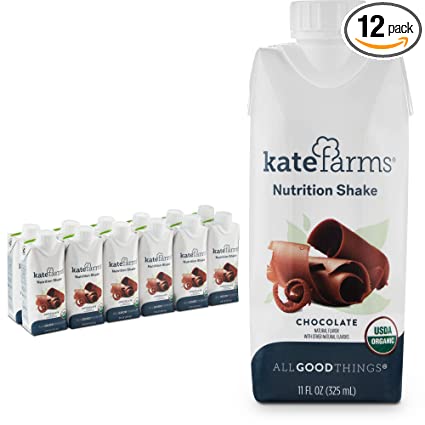
Paleo is a diet that doesn't follow any rules. Because the Paleo diet consists primarily in plant foods, there is no need to keep a food diary. It can be easily modified to meet various needs. However, there are some restrictions, including a complete ban on grains, most legumes, dairy products, and processed foods. This can be confusing, but it's a good idea for most people to consult a physician before trying a new lifestyle.
You should first be aware of which foods should be avoided. Paleo people are at greatest risk of developing vitamin D or calcium deficiencies. These nutrients are important for maintaining healthy bones. Therefore, avoid processed meats as well as dairy, eggs, and sweetened foods. Additionally, saturated fat can lead to a number of health conditions including diabetes, heart disease, and certain types of cancers. Nevertheless, if you are willing to make these changes, this diet can help you get the best results.

Fruits and vegetables are a great source of vitamins, minerals, and fiber. You may find some vegetables more sugary than others. Some paleo diets prohibit potatoes. Bananas, on the other hand are an excellent example of a food that is Paleo-friendly. A medium banana has 100 calories, 3 grams of fiber, and 25 grams of carbohydrates, making it a great choice for paleo diets.
Paleo can be a great way for you to enjoy a variety foodstuffs, but it can also prove dangerous if your fiber intake is not sufficient. This diet does not include grains or legumes. You'll need more effort to get the recommended fiber intake of 25g per day for women (and 38 grams for men) Before you start any new diet, it is important to consult a registered dietitian.
Paleo isn't for everyone. Before making the switch, there are a few things to be aware of. Even though the diet is rich in protein and fruit it also contains high amounts fat and fiber. You will have a lower chance of getting sick if you eat a high-protein diet. There are benefits to this diet but it may not be for everyone. While you might be overweight or obese it is important to experiment to determine what works best.

Paleo's main benefit is its support for a healthy digestion system. It helps to grow the right types of bacteria. It keeps the body's barrier systems healthy. It also helps to reduce inflammation. This will prevent an immune system that is overactive. A strong immune system is built on a healthy digestive system. It can help you fight inflammatory disease. It can also reduce the risk of cancer, diabetes, and even heart disease.
FAQ
How much should my body weight be for my height? BMI calculator and chart
Calculating your body mass index (BMI), is the best method to calculate how much weight to lose. Healthy BMI ranges between 18.5 to 24.9. If you want to lose weight, then you should aim to drop about 10 pounds per month. To calculate your BMI, simply enter your height and weight into the BMI calculator.
This BMI chart shows you if it is possible to identify if you are either overweight or obese.
How do I get enough vitamins?
Your diet can provide most of your daily requirements. Supplements are available if you are deficient. A multivitamin can contain all the vitamins that you need. You can also buy individual vitamins at your local pharmacy.
Talk to your doctor if there are any concerns about getting enough nutrients. You can find vitamins K and E in dark green leafy vegetable such as spinach, kale and turnip leaves, as well a variety of sweet potatoes and sweet potatoes.
Ask your doctor if you're not sure how many vitamins you should take. The doctor will determine the proper dosage based upon your medical history as well as your current health.
What are 5 ways to live a healthy lifestyle?
Living a healthy lifestyle includes eating right, exercising regularly, getting enough sleep, managing stress, and having fun! Healthy eating means avoiding sugary and processed foods. Exercise can help you burn calories and strengthen your muscles. Sleeping enough is good for memory and concentration. Stress management can reduce anxiety and depression. Fun is the key to keeping us healthy and happy.
Does being cold give you a weak immune system?
Cold makes you weaker because you have less white blood cells to fight infection. However, being cold also makes you feel better because your body releases endorphins into your brain which reduce pain.
What does it take to make an antibiotic work?
Antibiotics kill harmful bacteria. Antibiotics are used for treating bacterial infections. There are many types and brands of antibiotics. Some are given orally, while some are injected. Other antibiotics are applied topically.
Antibiotics are often prescribed to people who have been exposed to certain germs. If someone has chicken pox, they might need to take an oral antibiotic in order to prevent shingles. A penicillin injection might be given to prevent pneumonia in someone who has had strep.
If antibiotics are to be administered to children, they must be prescribed by a doctor. Side effects of antibiotics can be more dangerous for children than for adults.
Diarrhea is the most common side effect from antibiotics. Other side effects possible include dizziness, nausea, vomiting, stomach cramps, dizziness and allergic reactions. These side effects usually disappear once treatment has ended.
Do I need to count calories?
You may be wondering "what is the best diet for you?" or "is counting calories necessary?" The answer is dependent on several factors like your current health status, personal goals, your lifestyle, and your preferences.
The Best Diet For Me: Which One Is Right?
My current health, my personal goals and lifestyle will determine the best diet for me. There are many diets available, some good and others not so good. Some diets work well for some people and others do not. So what do I do? How do I make a good decision?
These are the questions this article will answer. It starts with a brief introduction of the different types of diets available today. The pros and cons of each diet are then discussed. We'll then discuss how to choose which one is best for you.
Let's begin by briefly reviewing the different types and diets.
Diet Types
There are three main types: low-fat, high-protein, or ketogenic. Let's take a look at them all below.
Low Fat Diets
A low-fat diet reduces the amount of fats you eat. This is done through reducing the intake of saturated fats (butter, cream cheese, etc.) They are replaced by unsaturated fats such as avocados, olive oil, and cream cheese. For those looking to lose weight quickly, a low-fat diet is often recommended. However, this kind of diet may cause problems such as constipation, heartburn, and indigestion. Vitamin deficiencies can also occur if the person doesn't get enough vitamins through their diet.
High Protein Diets
High protein diets restrict carbohydrates in favor of proteins. These diets are more protein-rich than others. These diets are intended to increase muscle mass and reduce calories. One problem is that they might not be sufficient to provide regular nutrition. They may also be too restrictive and not suitable for everyone.
Ketogenic Diets
Ketogenic diets can also be known as keto diets. They are high fat and moderately carbohydrate and protein-rich. They are commonly used by athletes and bodybuilders, as they allow them train harder and more frequently without getting tired. You must adhere to all side effects, including fatigue, headaches, nausea and headaches.
Statistics
- According to the Physical Activity Guidelines for Americans, we should strive for at least 150 minutes of moderate intensity activity each week (54Trusted Source Smoking, harmful use of drugs, and alcohol abuse can all seriously negatively affect your health. (healthline.com)
- WHO recommends reducing saturated fats to less than 10% of total energy intake; reducing trans-fats to less than 1% of total energy intake; and replacing both saturated fats and trans-fats to unsaturated fats. (who.int)
- WHO recommends consuming less than 5% of total energy intake for additional health benefits. (who.int)
- The Dietary Guidelines for Americans recommend keeping added sugar intake below 10% of your daily calorie intake, while the World Health Organization recommends slashing added sugars to 5% or less of your daily calories for optimal health (59Trusted (healthline.com)
External Links
How To
How to Live a Healthful Lifestyle
A healthy lifestyle is one that allows you to maintain your weight, your health, and your fitness. This lifestyle includes healthy eating habits, regular exercise, adequate sleep, and abstaining from drugs, alcohol, caffeine, tobacco and other harmful substances. Healthy living can help you feel better about yourself and keep you fit. In addition, a healthy lifestyle reduces your risk of chronic diseases like heart disease, stroke, diabetes, cancer, osteoporosis, arthritis and many others.
This guide will help you live a healthier, more fulfilling life. The first part of the project consisted of writing the introduction, which explains what a healthy lifestyle is, why people should adopt a healthy lifestyle and who we are. The body paragraphs are a collection of tips for living a healthy life. Finally, I wrote the conclusion. This summarizes the entire article, and provides additional resources, if needed.
I learned how to create a concise and clear paragraph through this assignment. I also learned how to organize my thoughts into topic sentences, and the supporting details. Furthermore, I was able to improve my research skills by being able to identify specific sources and correctly cite them. I learned proper grammar to write.